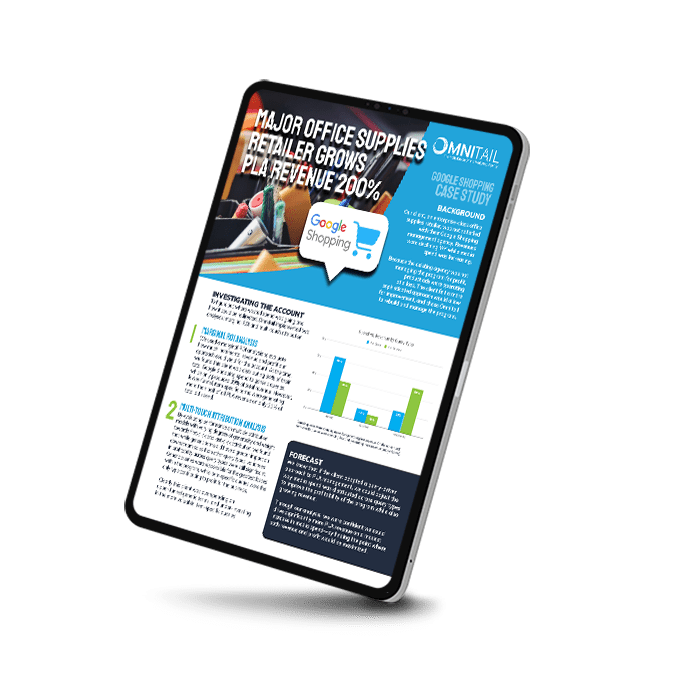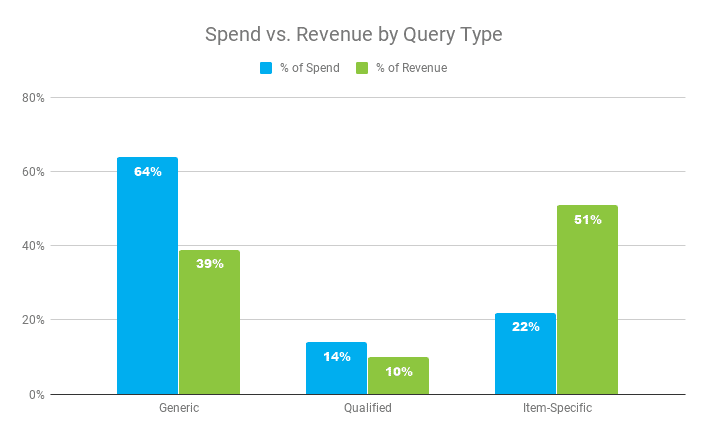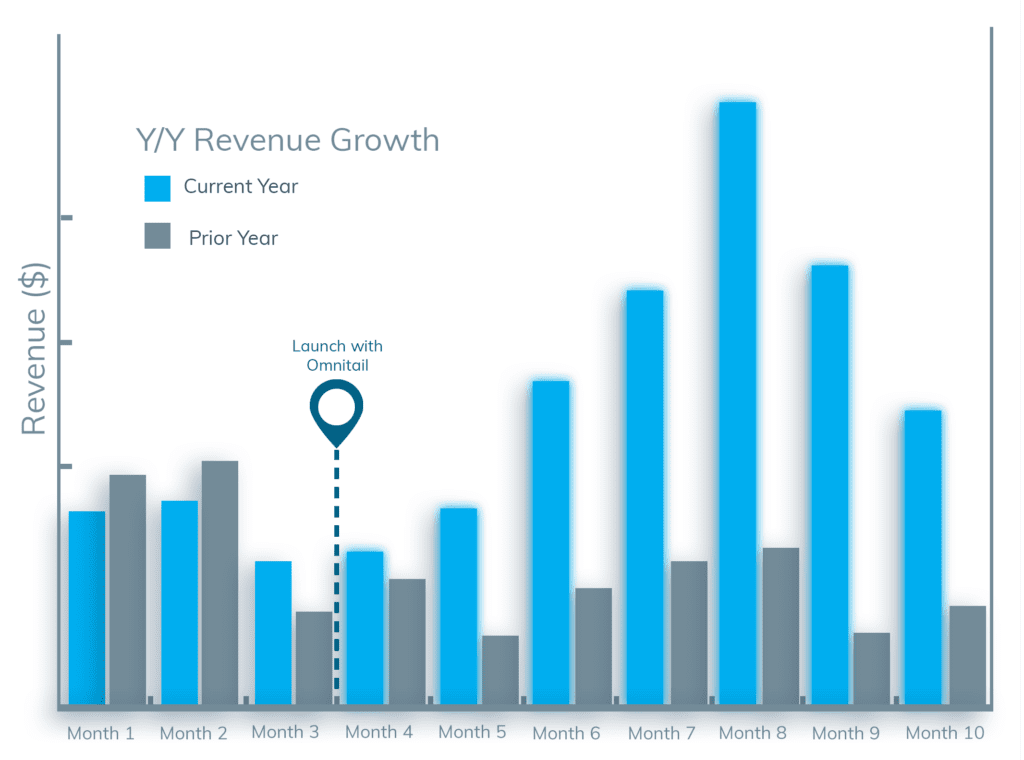
BACKGROUND
Our client, an enterprise-class office supplies retailer, was not satisfied with their Google Shopping management agency. Revenues were declining Y/Y while media spend was increasing.
Because the existing agency was not managing the program for profit, product ads were operating at a loss. The client felt a more sophisticated approach would allow for improvement, and chose Omnitail to rebuild and manage the program.

200%
Year/Year Increase in Revenue 7 Month Average
25%
Increase in New Customer Rate
2.4x
Increase in Total New Customers
INVESTIGATING
THE ACCOUNT
To figure out where wasted spend was going and how it could be redirected, Omnitail implemented two analyses: marginal ROI and multi-touch attribution.

1. Marginal ROI Analysis
We used a marginal ROI analysis to evaluate how much incremental revenue and profit our approach could yield for the account. At the time, we found this client was distributing 64% of their total Google Shopping spend to generic queries, which only produced 39% of total revenue. However, lower-funnel, item-specific terms were generating more than half of all PLA revenue on only 21% of total ad spend.
2. Multi-Touch Attribution Analysis
By evaluating performance on multiple attribution models with varying degrees of generosity and weight towards first-click and last-click attribution, we found that while generic terms did have a greater impact on downstream sales than other query types, variances in profitability across query types were still significant. Generic queries were responsible for the greatest losses within the program, while item-specific queries were the only type contributing to profit for the business.
Clearly this client was overspending on upper-funnel generic terms, and under-investing in the more valuable item-specific queries.
Omnitail's Advertising Strategy
By implementing more than 800,000 unique negative keywords through the account, we were able to effectively segment product ads by query intent. We also implemented a framework for evaluating ad performance across four unique attribution models to help inform bidding decisions. Using these models, we vetted prior assumptions of customer lifetime value, and found they were inaccurate—changing the way we manage bids and ad spend.
Results
This client was able to improve the health of the business substantially by having a more accurate understanding of the lifetime value of a Google Shopping customer (as opposed to all customers).
Our client developed a competitive advantage by segmenting Google, Bing, and Yahoo Shopping programs for combinations of product and query performance. We were able to distribute ad spend to the most valuable search terms first, saturating demand and outbidding competing advertisers for the most valuable terms, while maintaining a presence on generic terms at a much lower cost.
This approach allowed for an unprecedented growth rate while improving the profitability of Google Shopping and other PLA channels.

CONCLUSION
These efforts resulted in a 199% Y/Y increase in revenue through the first seven months with Omnitail, though revenue grew by as much as 483x Y/Y in a single month. New customer acquisition rate improved 25% Y/Y while driving a 240% increase in total new customers acquired. This was accomplished with only a 3.8% increase in average customer acquisition cost (CAC).






